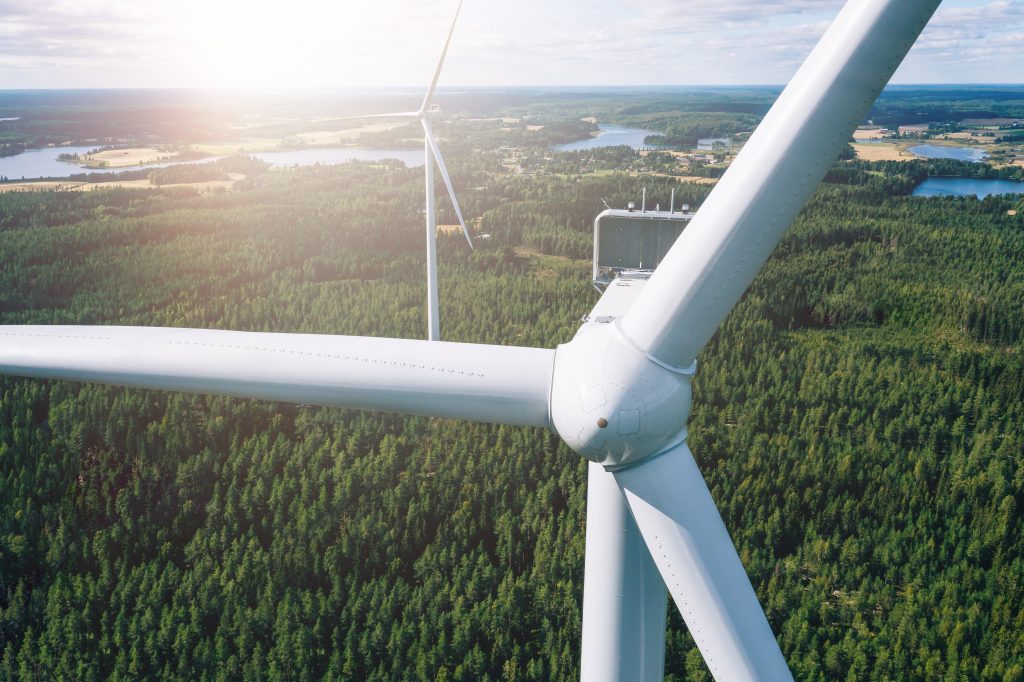Renewable energy company OX2 has announced plans to invest approximately €700 million in two new wind farms in South and Central Ostrobothnia. This marks the largest renewable energy investment decision ever made in Finland and the biggest of its kind in the Nordic region since 2022. Construction will begin immediately in the Rajamäenkylä wind farm.
The Rajamäenkylä site will feature 54 turbines and Honkakangas 16, totalling 70 new wind turbines. Together, the parks will have a combined rated capacity of 472 megawatts (MW). The projects are expected to be completed by 2027–2028. Once operational, the farms are estimated to produce around 1.6 terawatt-hours (TWh) of electricity annually—equivalent to about two per cent of Finland’s current annual electricity generation. This new capacity represents a significant boost to Finland’s power grid.
The investment is also notable as it marks the first major wind energy initiative in Finland after a brief pause. While turbine construction remained active last year, very few new investment decisions were announced in 2023, due to rising interest rates dampening project viability. OX2’s announcement breaks that silence and signals that large-scale projects are once again moving forward. According to the company, Finland offers excellent conditions for expanding renewable electricity production. “I believe our investment decision sends an encouraging message to those planning electricity-intensive projects,” said Veli-Pekka Alkula, Country Manager of OX2 Finland.
A Positive Signal for Industrial Projects
When OX2 refers to “electricity-intensive investments”, they mean large-scale industrial ventures that consume significant power—such as electrolysis plants for green hydrogen and biorefineries. Finland is currently seeing a wave of hydrogen and biofuel projects as part of its green transition. These developments require access to large volumes of affordable clean electricity, making major new renewable investments critical to their success. OX2’s decision sends a strong signal to the sector: new capacity will support the growth of both hydrogen production and biofuels by increasing the availability of zero-emissions electricity.
Data centres are another category of electricity-intensive investments. Finland has recently attracted several major international server hub projects. According to the Confederation of Finnish Industries, there are currently about €10 billion worth of new data centre projects under development across the country. For instance, Google is expanding its major data centre in Hamina with a €1 billion investment, bringing its total investment in Finland to over €4.5 billion. Google stated that “Hamina—and Finland overall—is an excellent location for data centres. The electricity grids are very stable here, and the society itself is stable.”
The decision by multiple data centre operators to set up in Finland reflects growing confidence in the country’s stable and secure investment environment. A reliable power grid, affordable clean energy, and a stable society are key advantages that have helped Finland attract major global industrial players.
Wind Power Growth Resumes After Brief Pause
Wind power generation in Finland has expanded rapidly in recent years. Last year, wind accounted for 18.2 percent of all electricity consumed in the country, making it the third largest source of electricity production —nearly on par with hydropower.
The sector set a record in 2022, with 2,430 MW of new capacity built, bringing Finland’s total installed wind capacity to about 5.7 gigawatts by the end of that year. Construction remained active in 2023, making it the second busiest year on record: by the end of the year, Finland had 1,601 operational turbines with a combined capacity of 6,946 MW. Wind power has now become a cornerstone of Finland’s energy system.
In 2024, a total of 235 new turbines were installed, adding 1,414 MW of capacity—despite a slump in investment decisions the previous year. High inflation and rising interest rates had dented the profitability of new wind projects, slowing down final investment decisions. Nevertheless, total wind capacity increased by an impressive 20% during the year. By the end of 2024, Finland had 1,835 turbines and 8,358 MW of installed wind capacity.
The renewed momentum behind new construction is driven by steadily growing electricity demand, which in turn is fuelling the need for further investment. Finnish grid operator Fingrid estimates that electricity consumption in Finland could double by 2035, reaching approximately 160 TWh. This increase is largely driven by rapid growth in industrial use, hydrogen production, and data centres. Such a surge in demand places pressure on the energy sector to significantly expand generation capacity. Wind and solar power will be scaled up considerably in the coming years, and new nuclear power will also be needed over the long term to meet rising demand.
Experts say Finland still requires energy investments on the scale of billions of euros to ensure enough electricity for future hydrogen plants, biorefineries, data centres, and other power-hungry ventures. The wind power project just announced by OX2 is a strong example of this trend—it shows that the right conditions for investment still exist, even in challenging times. It’s a sign that Finland remains on a sustainable growth path and will be able to provide clean electricity for new industrial projects well into the future.
Read More:
- OX2 Finland: OX2 on tehnyt Suomen kaikkien aikojen suurimman uusiutuvan energian investointipäätöksen – tuulipuistojen rakentaminen alkaa heti (In Finnish)
- MTV Uutiset: Pohjanmaalle kaksi uutta tuulivoimapuistoa – kyseessä suurin yksittäinen uusiutuvan energian investointipäätös (In Finnish)
- YLE: Suomeen nousee kaksi uutta tuulivoimapuistoa – kaikkien aikojen suurin uusiutuvan energian investointi (In Finnish)
- Kaleva: Tervetuloa datakeskukset, mutta ne eivät ole vihreän siirtymän parasta antia (In Finnish)
- YLE Kymenlaakso: Google laajentaa Suomessa sijaitsevaa datakeskustaan – Haminaan jopa 100 uutta työpaikkaa (In Finnish)
- Suomen Tuulivoimayhdistys / Suomen Uusiutuvat ry: Tuulivoimatilastot 2024 (In Finnish)

